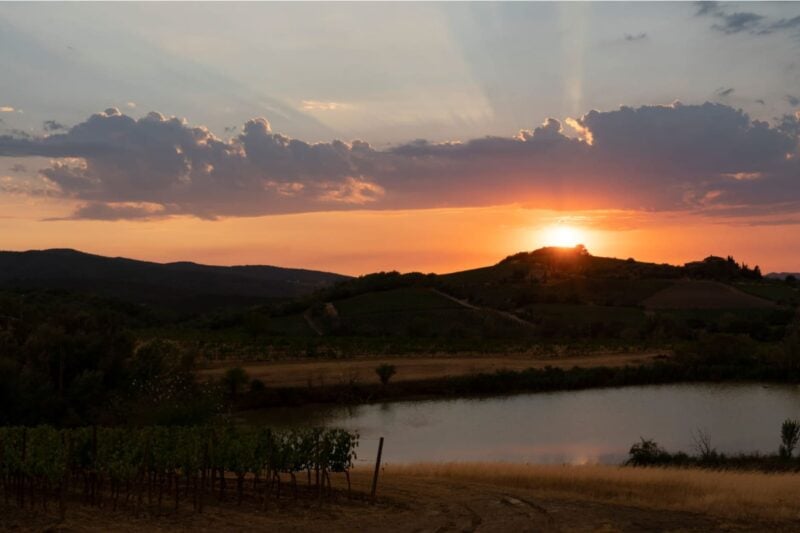Cut through by the Suga stream (so called because cork oaks probably grew along its banks since the 1500s), this estate on the northern slope of Montalcino witnessed a gradual reconversion of the land from arable to vines in the 1960s.
In 1969 Val di Suga took its first steps in the midst of the pioneering era: it purchased an estate in the northern sector of Montalcino and reconverted the land intended for arable crops and fruit trees. The valley’s position is a strategic one, it has always been renowned but, back then only a part was destined to viticulture.
History
Val di Suga - Montalcino

1960s
1973
The first harvest, while in 1975 the first wine was sold under the Val di Suga brand
1980s
During the 1980s an ambitious project began for Val di Suga to produce great Brunellos from defined areas and single vineyards. This went further than the approach at that time, which was mainly geared towards blends. In 1983 the Vigna del Lago Cru was created, from a single vineyard located between the lake and the winery, on the northern slope of Montalcino.
In 1988 the Vigna Spuntali Cru was created, from a single vineyard purchased shortly beforehand, 15 hectares on the southwestern slope of Montalcino, facing the sea.
1994
Val di Suga came under Tenimenti Angelini, belonging to one of Italy’s best-known entrepreneurial families. They extended the vineyard surface area, modernized and expanded the cellar and the wines became increasingly well-known.
2009
The Poggio al Granchio Cru was created, from a single vineyard purchased shortly beforehand, 20 hectares on the southeastern slope of Montalcino, near Monte Amiata.
2023
Work to modernize Val di Suga’s corporate image was completed, which now included 3 different winegrowing areas (Vigna Spuntali, Poggio al Granchio, Vigna del Lago) on 3 different slopes of Montalcino.
3 different terroirs, interpreted by 3 different Brunello Crus, as well as a Brunello and a Rosso di Montalcino, which aspire to the perfect balance between the various vineyards.